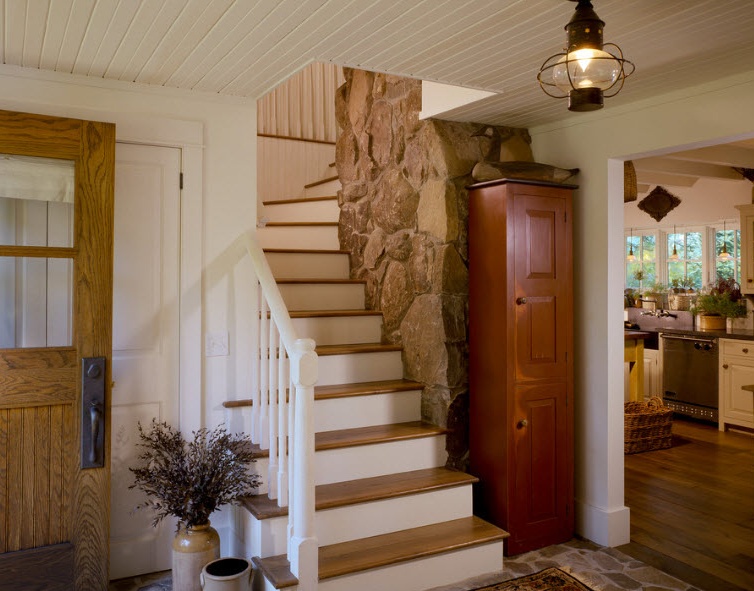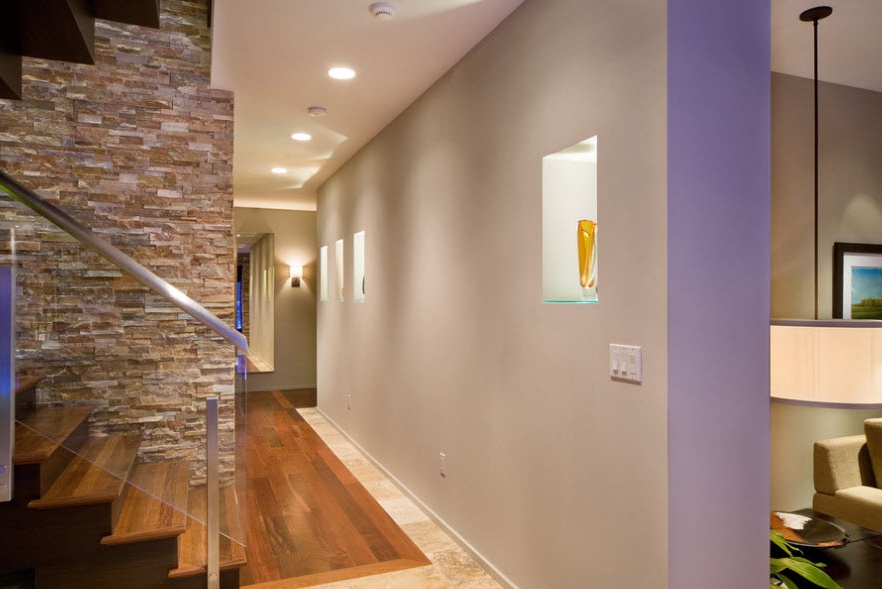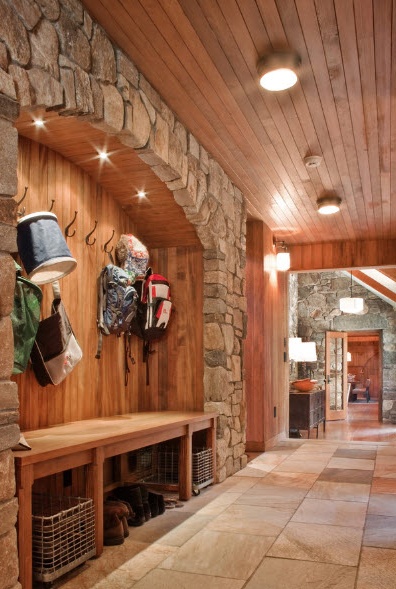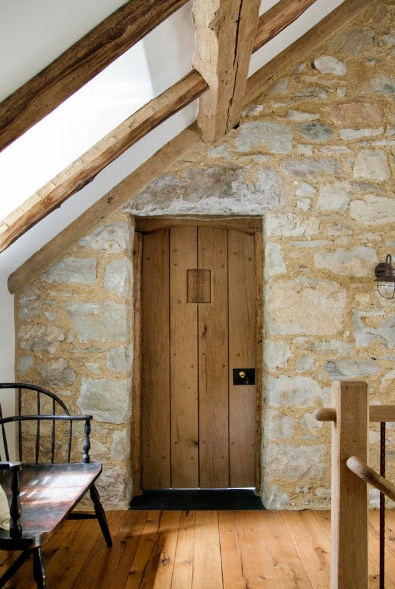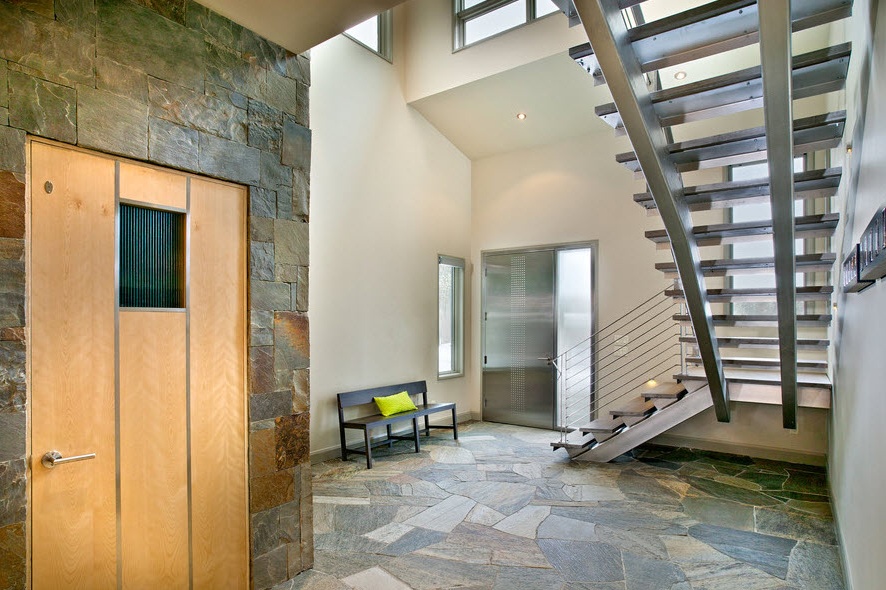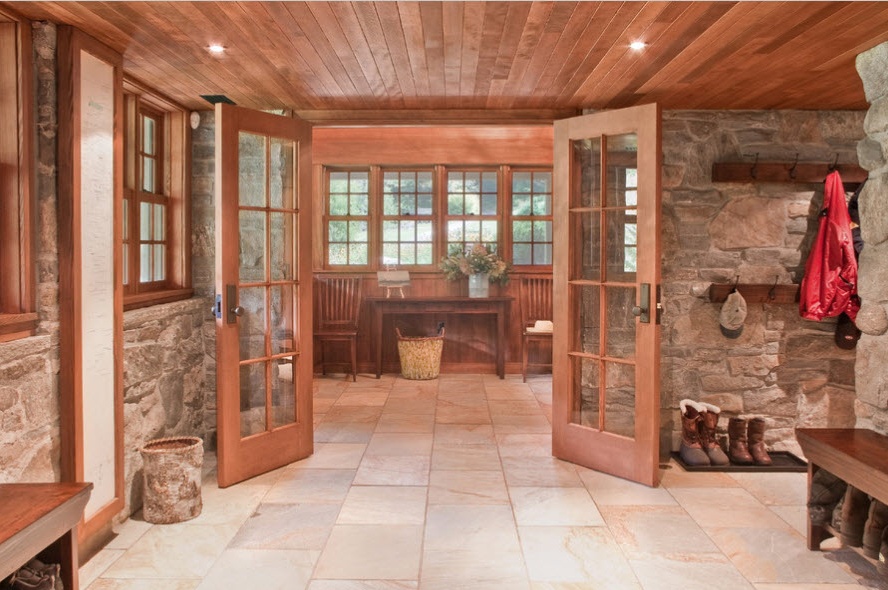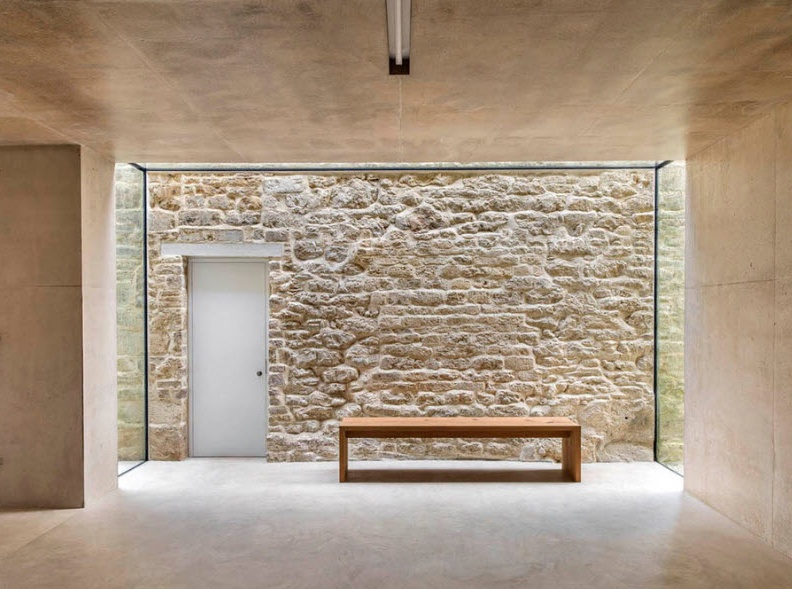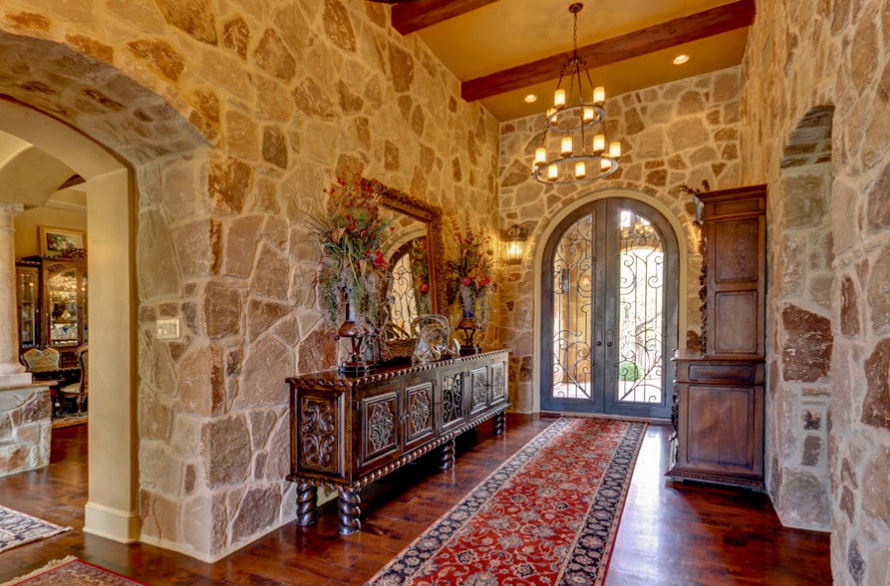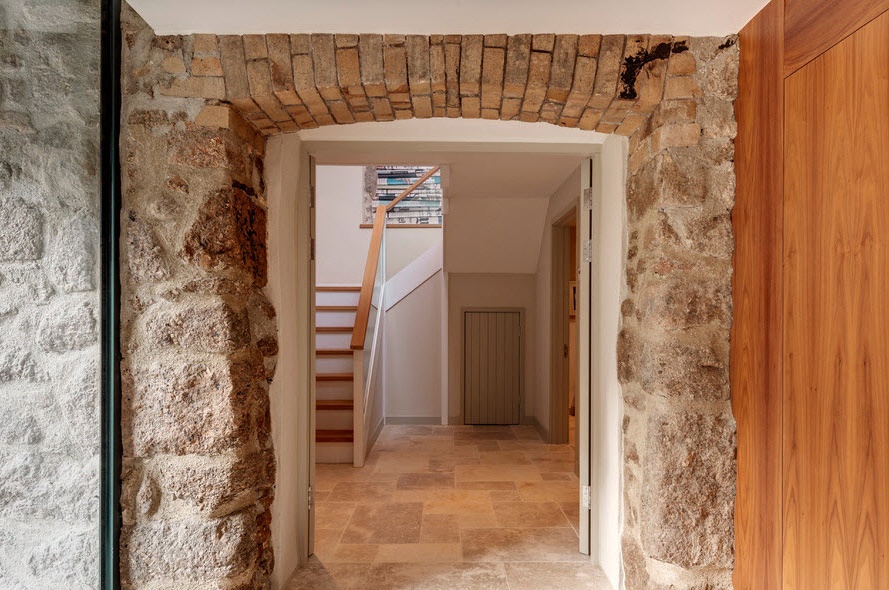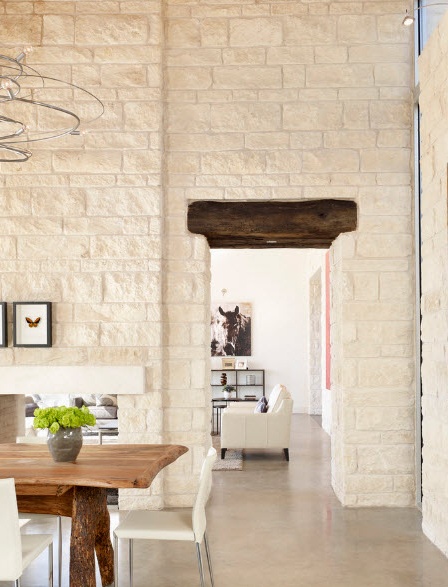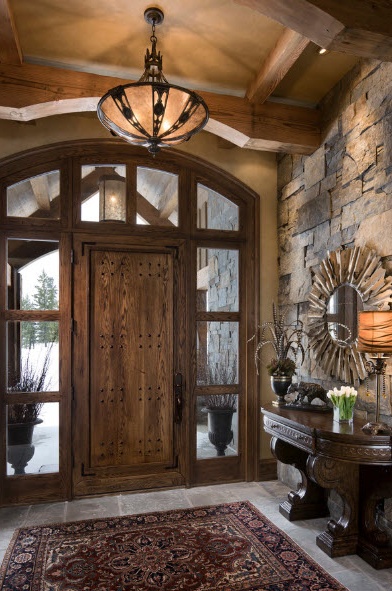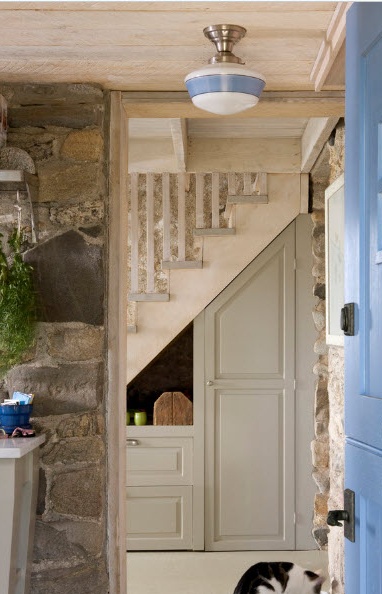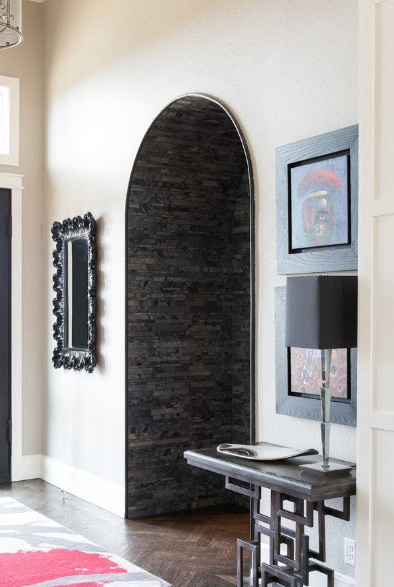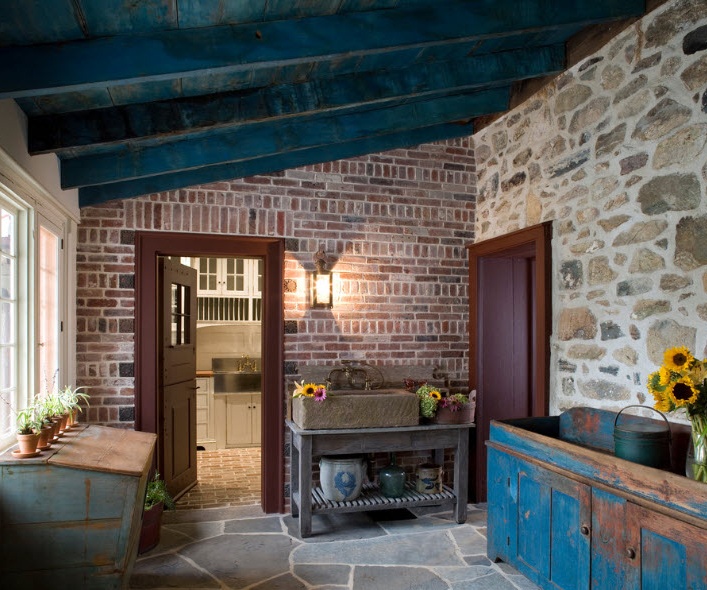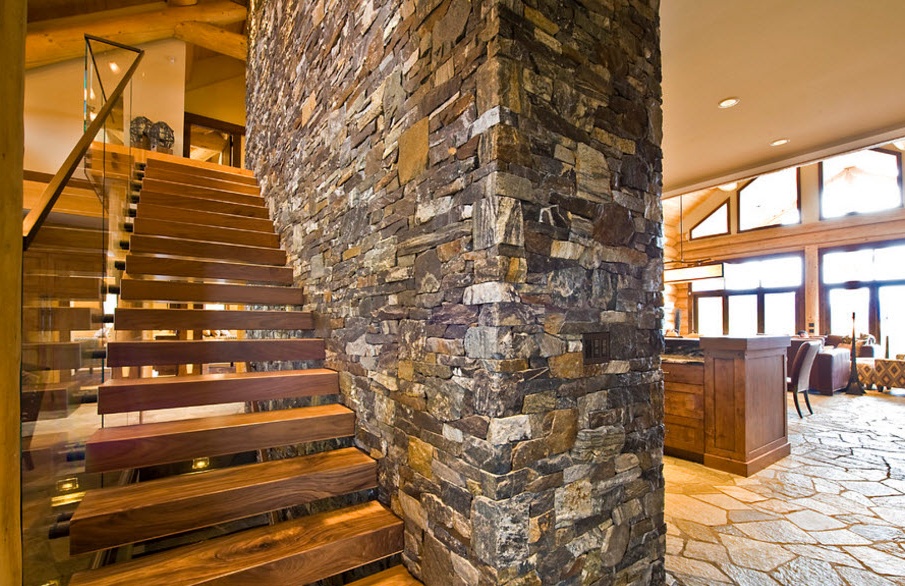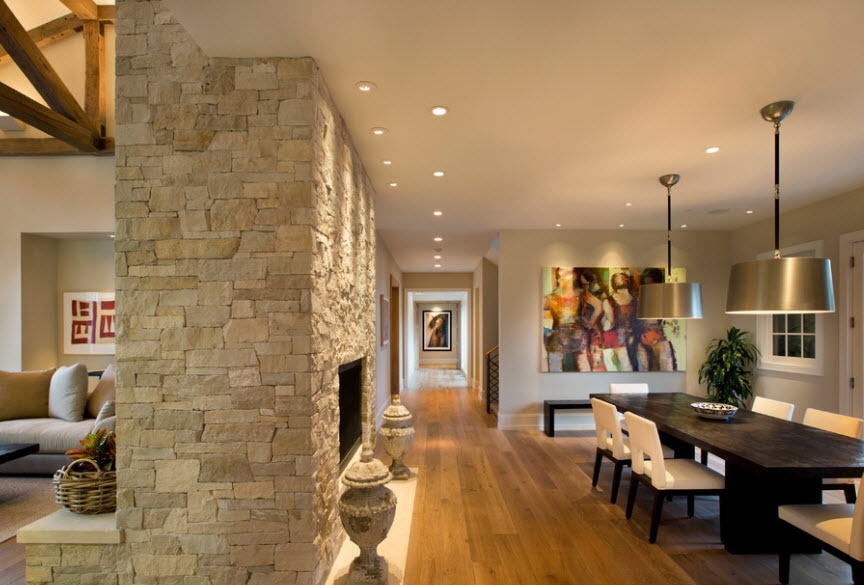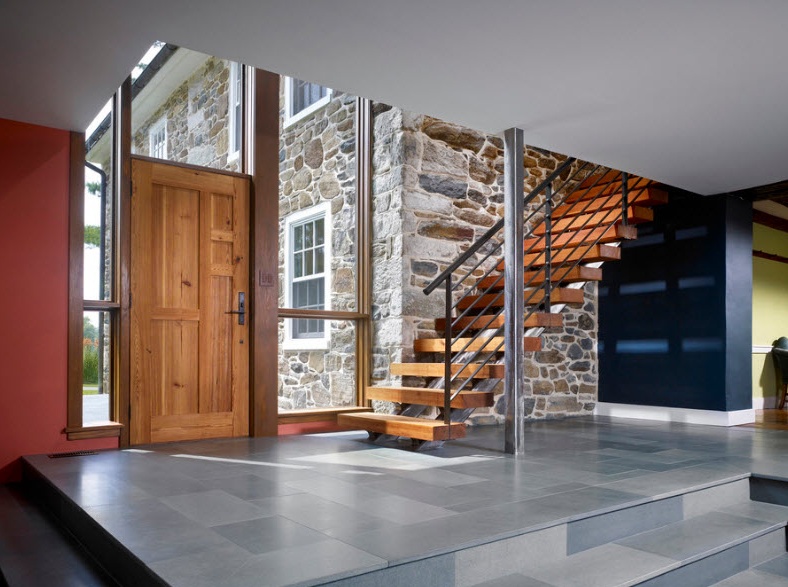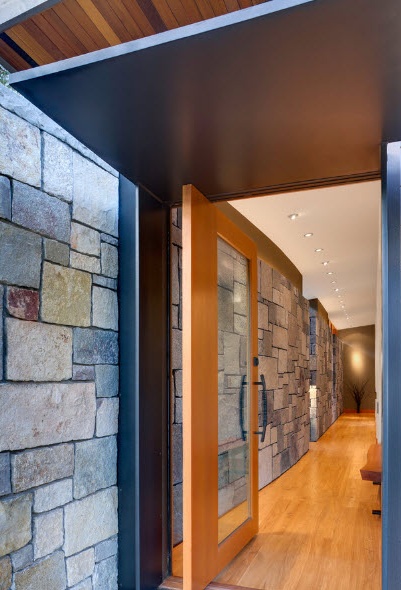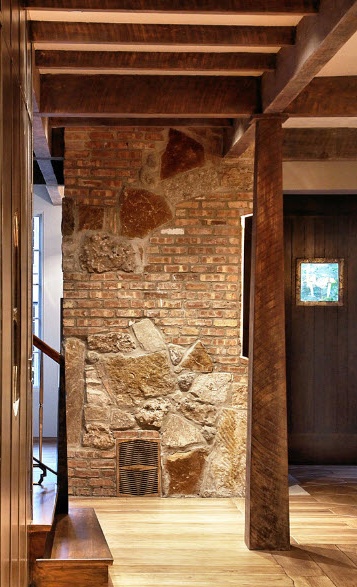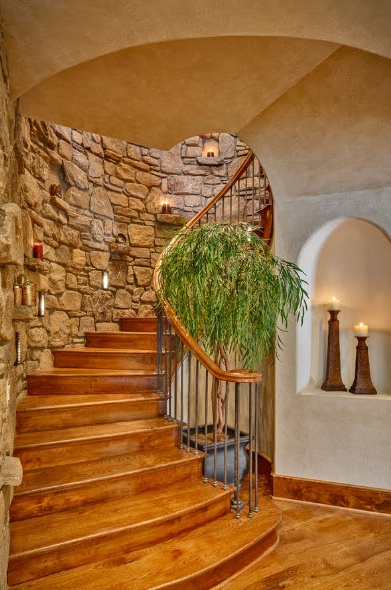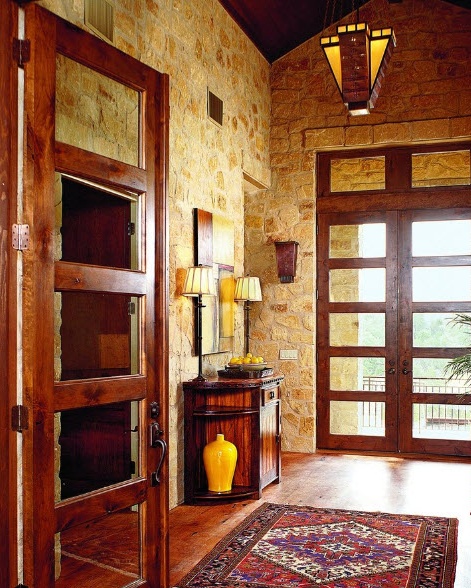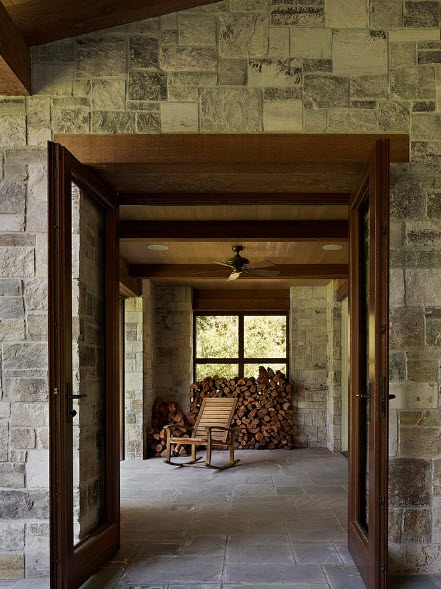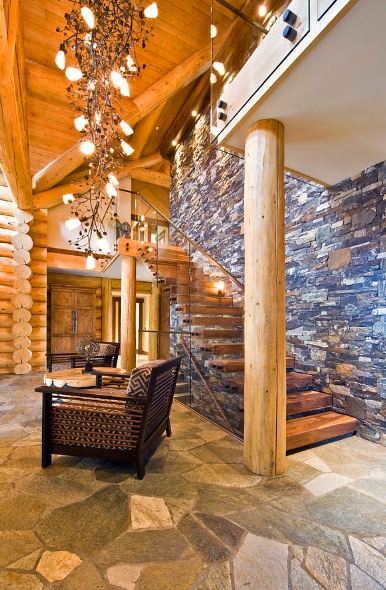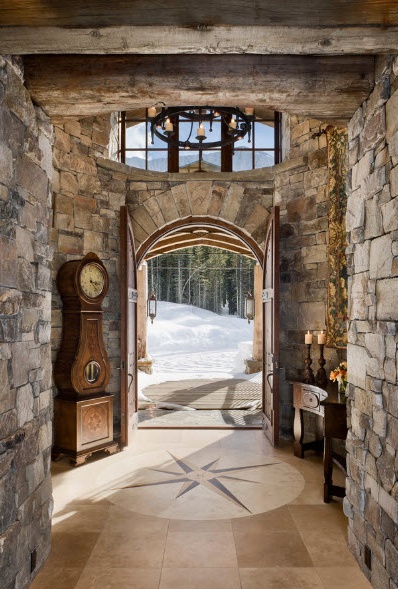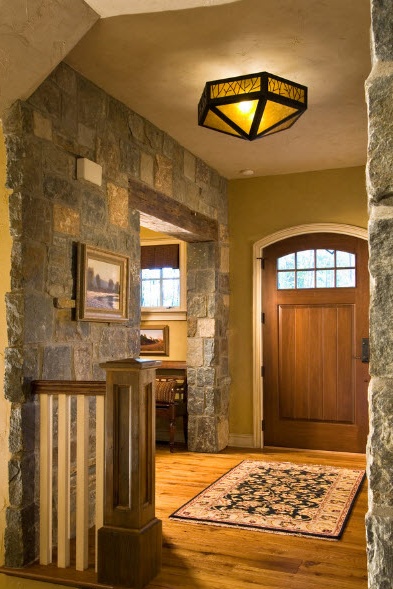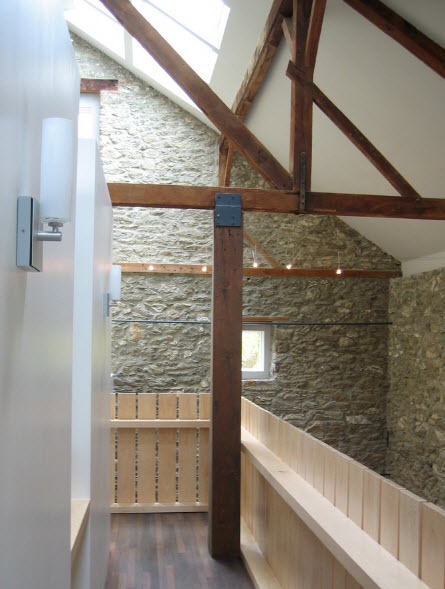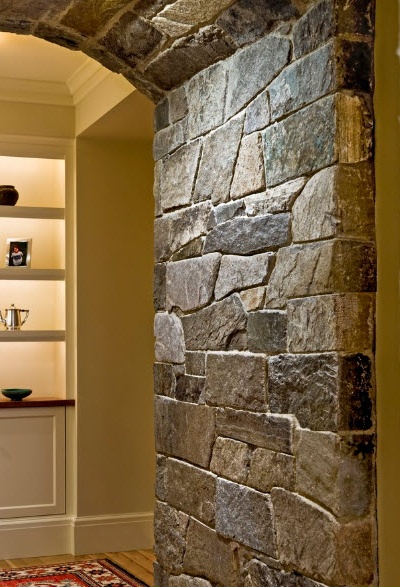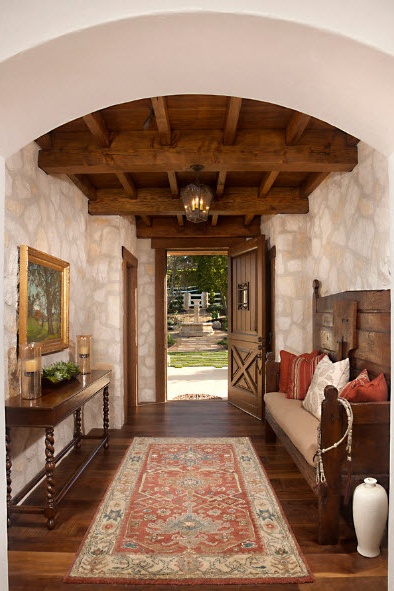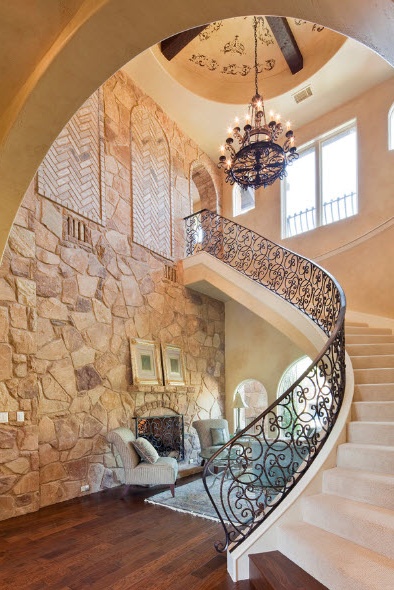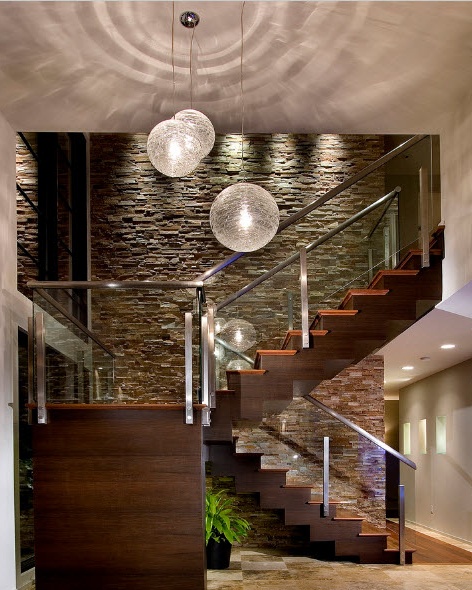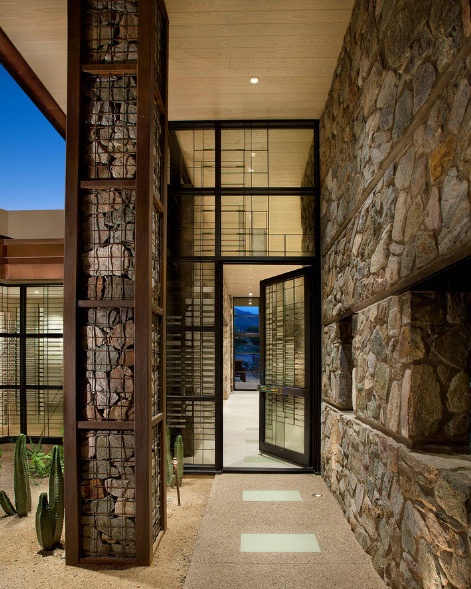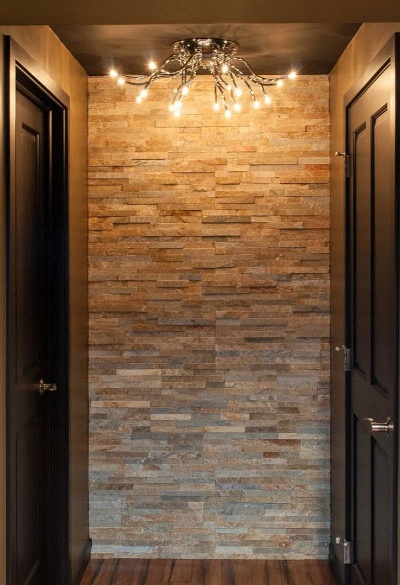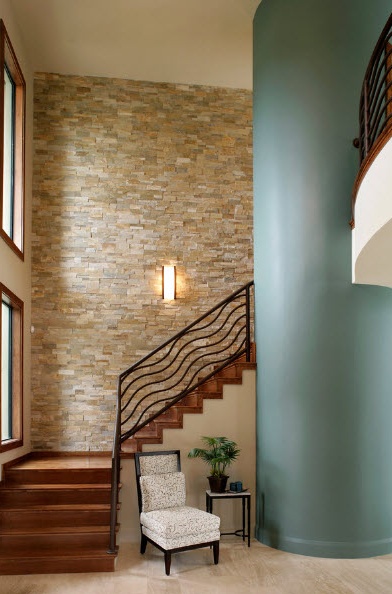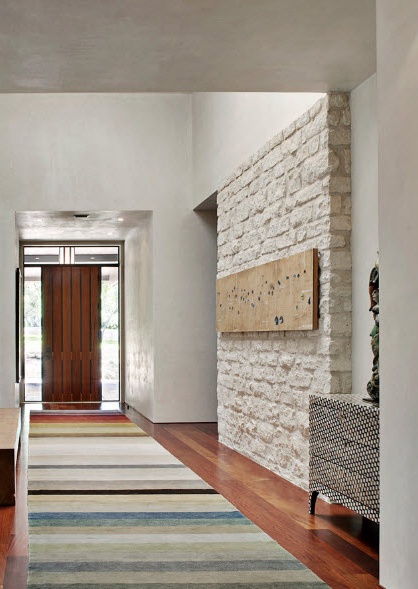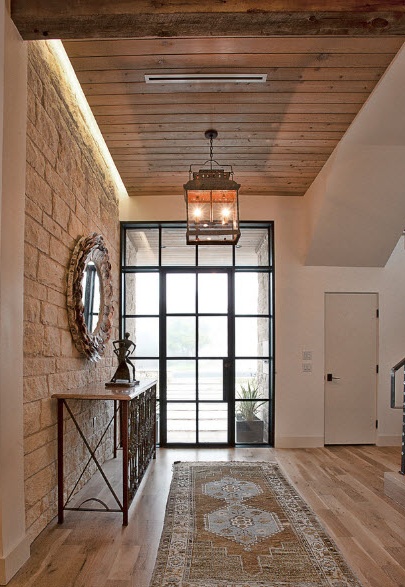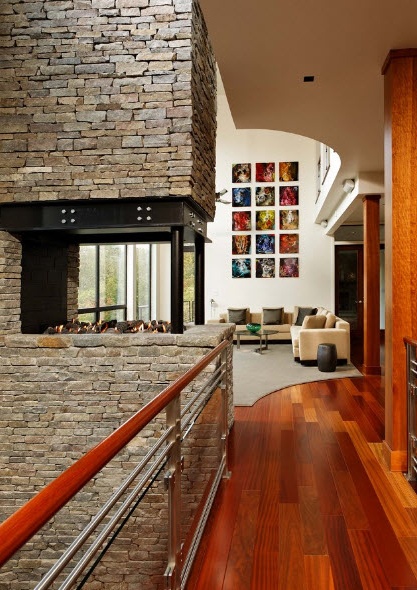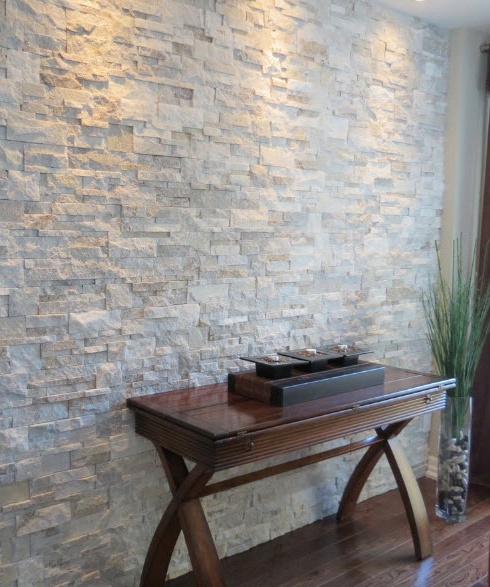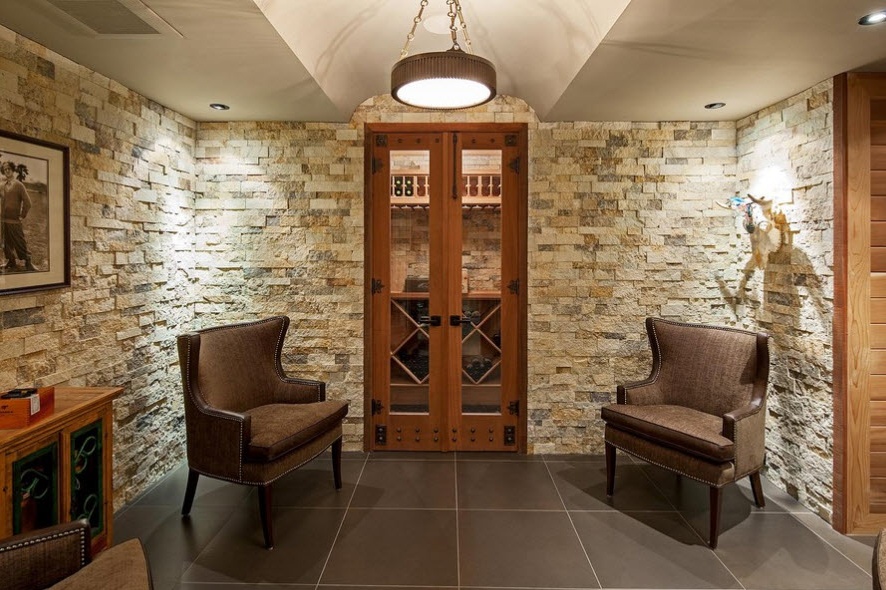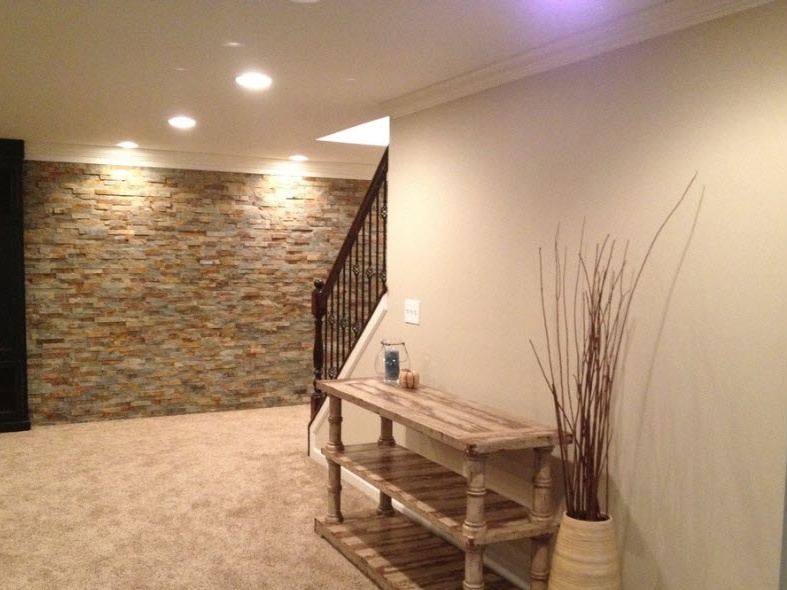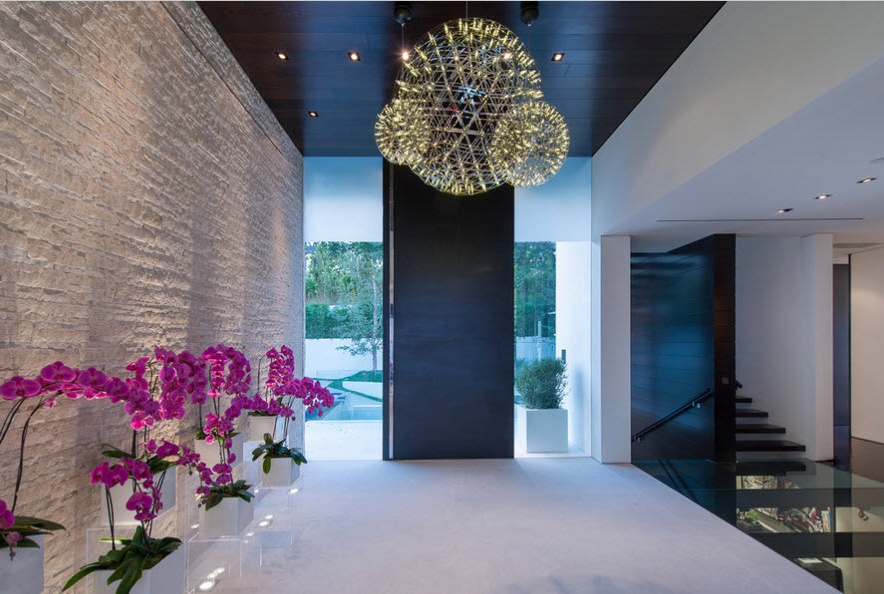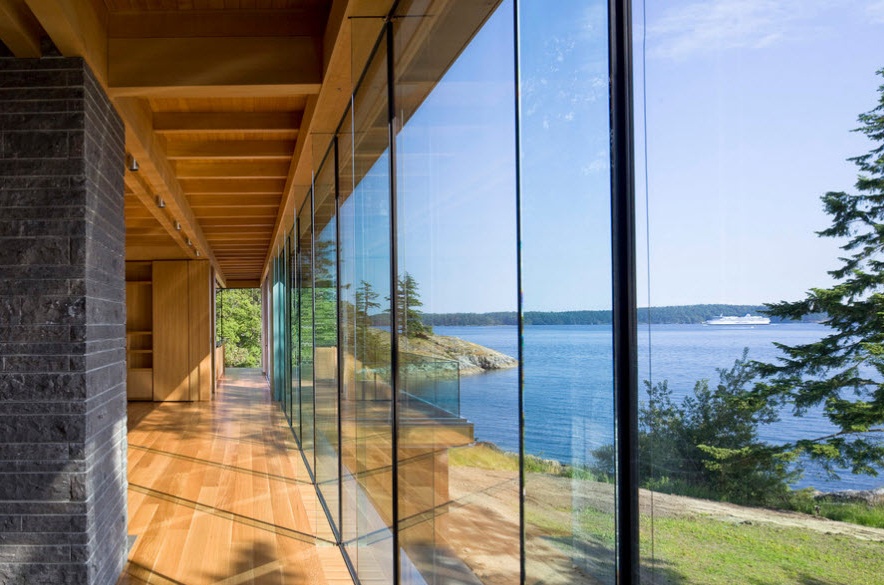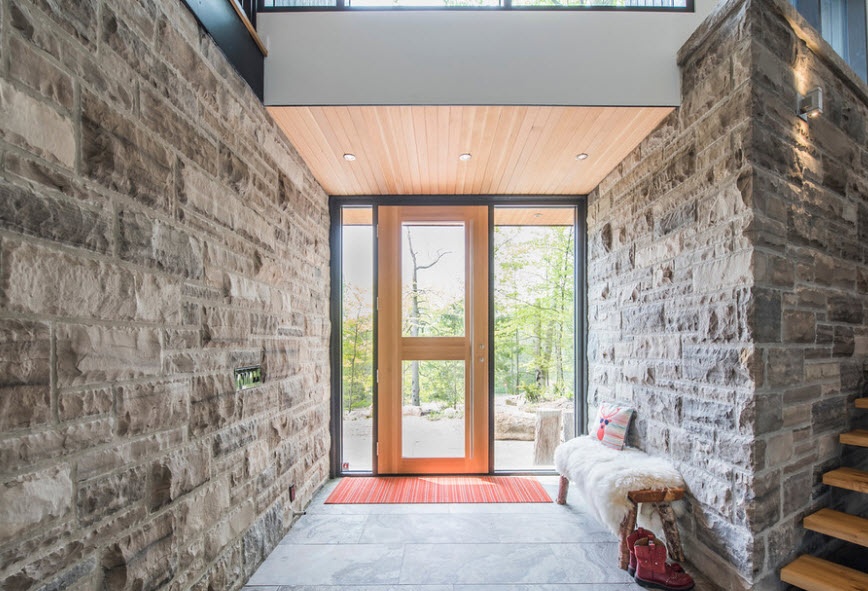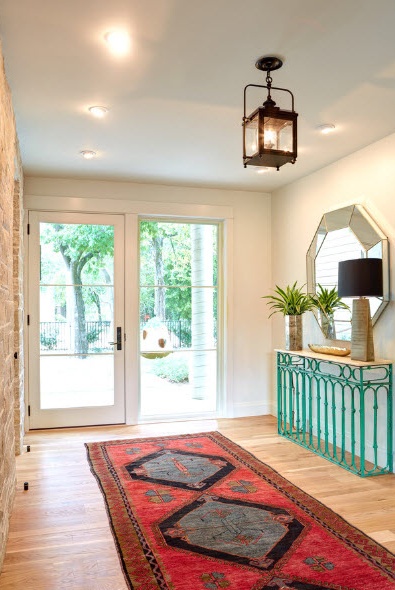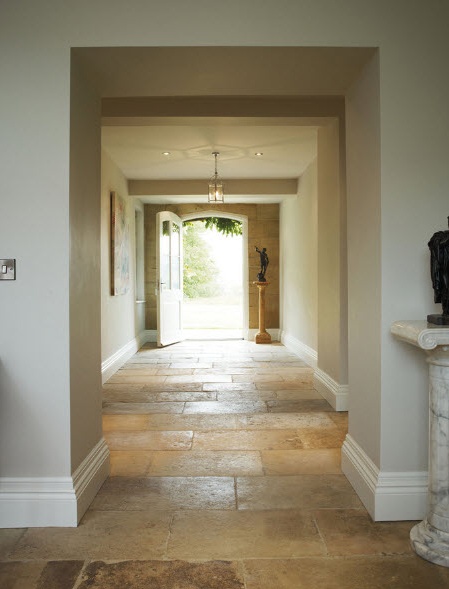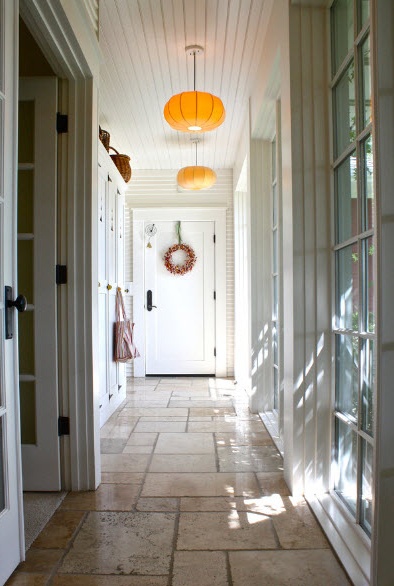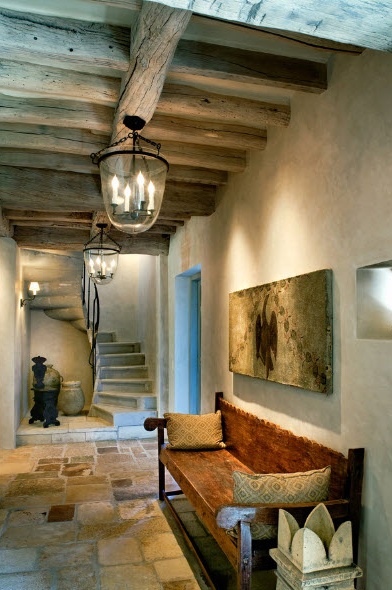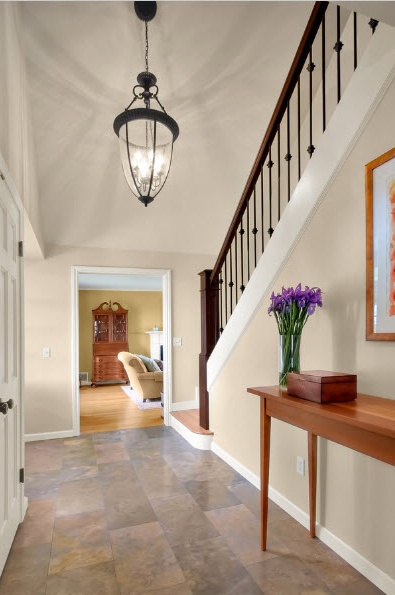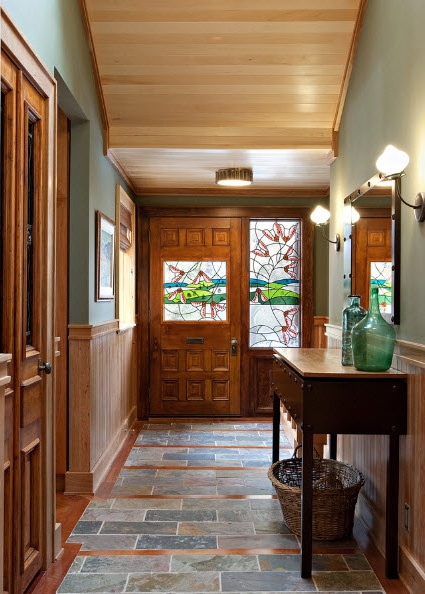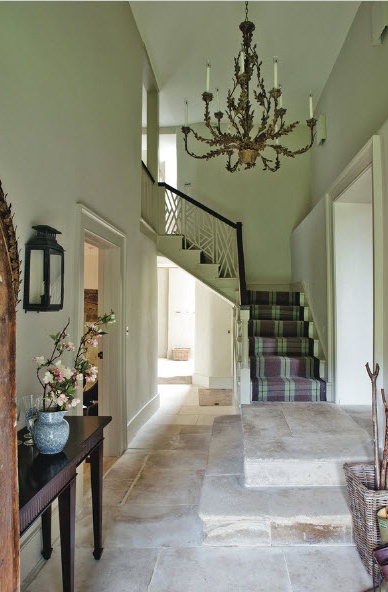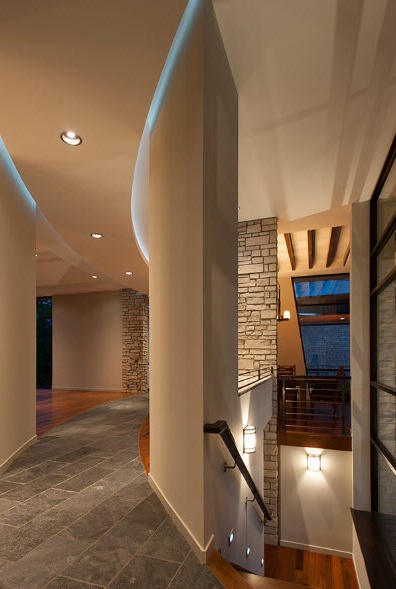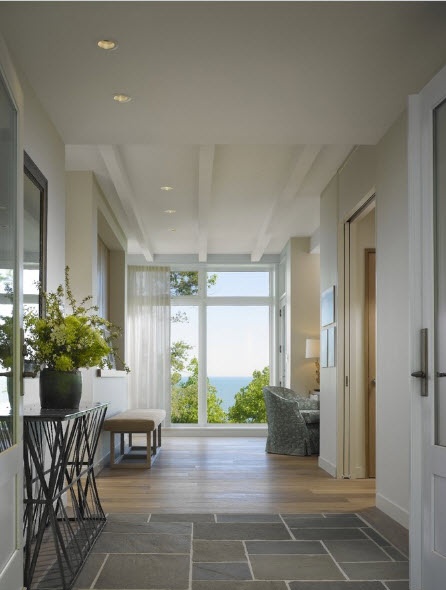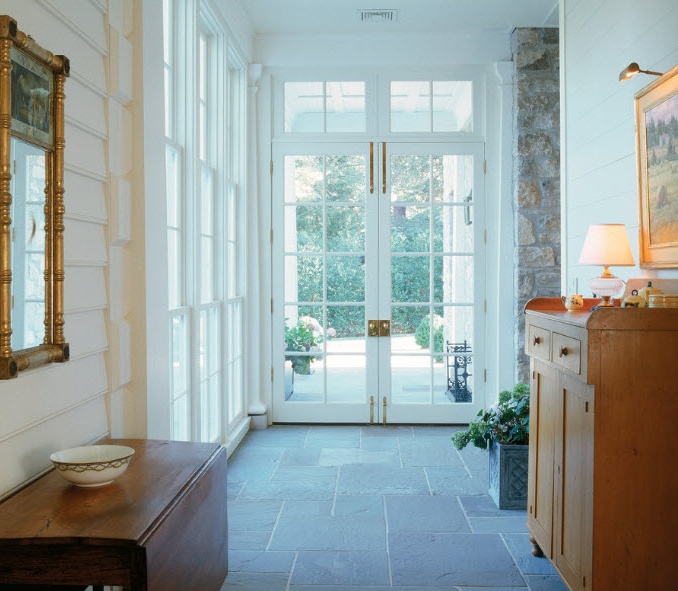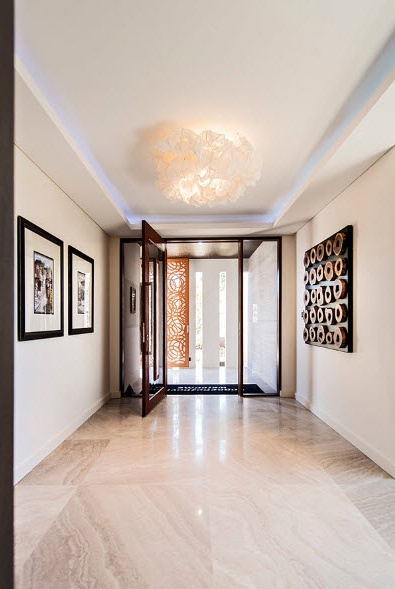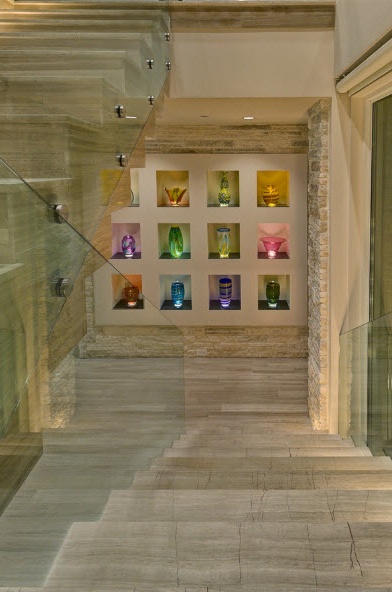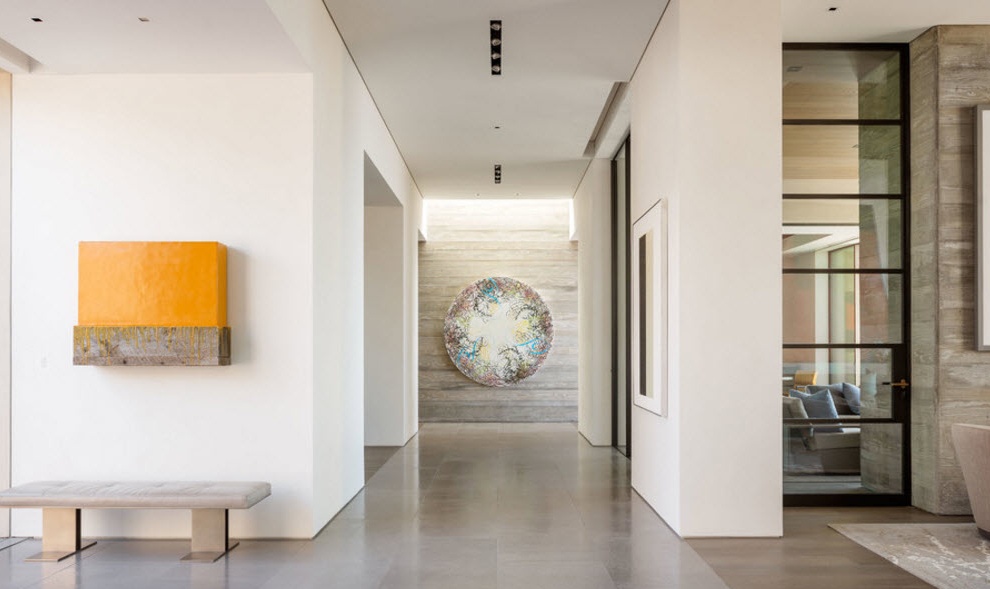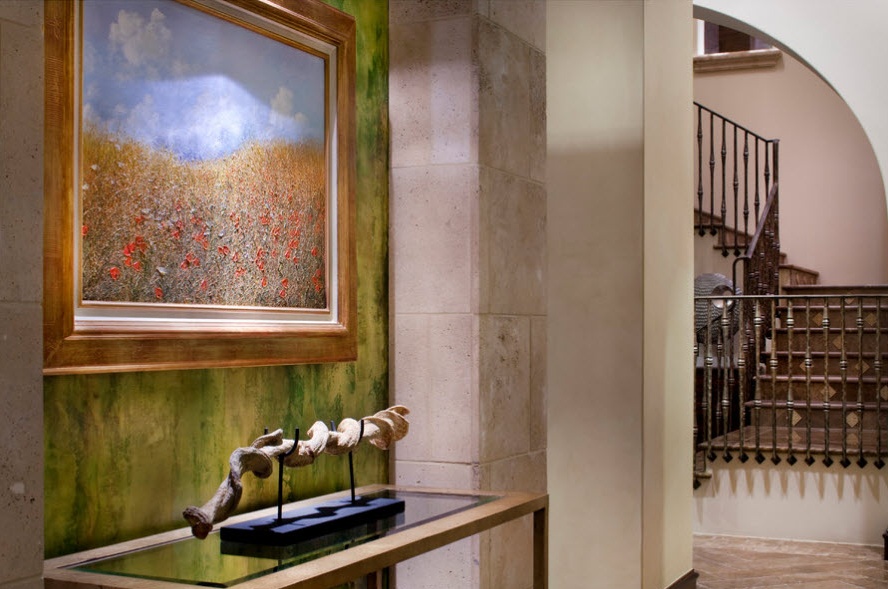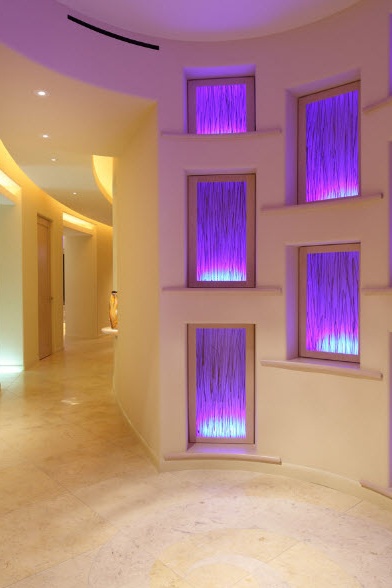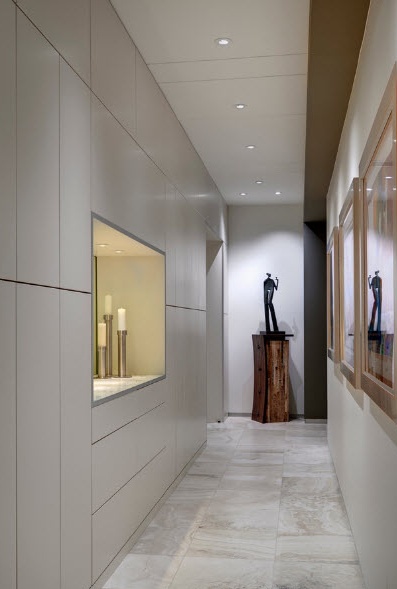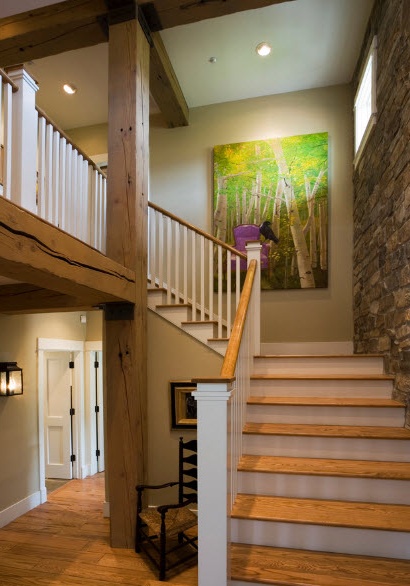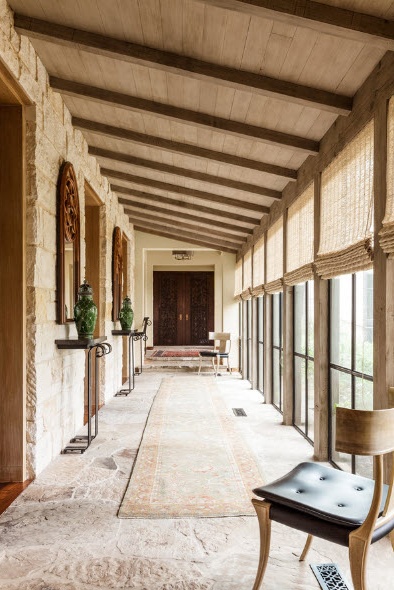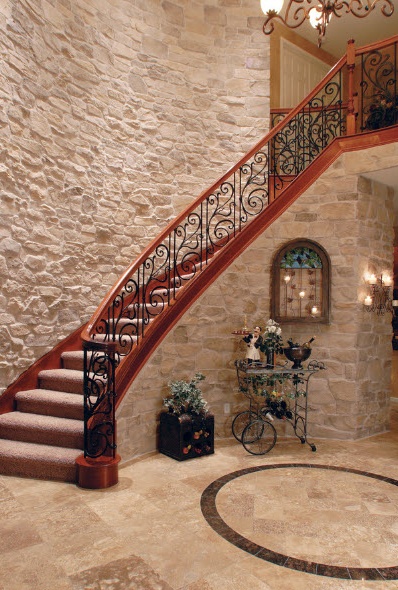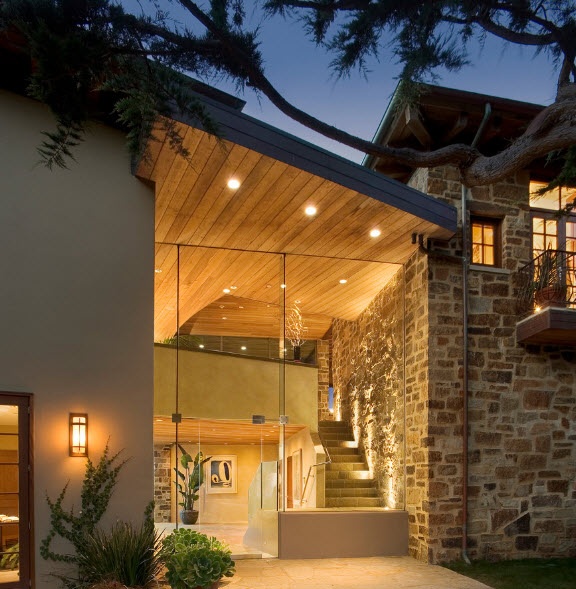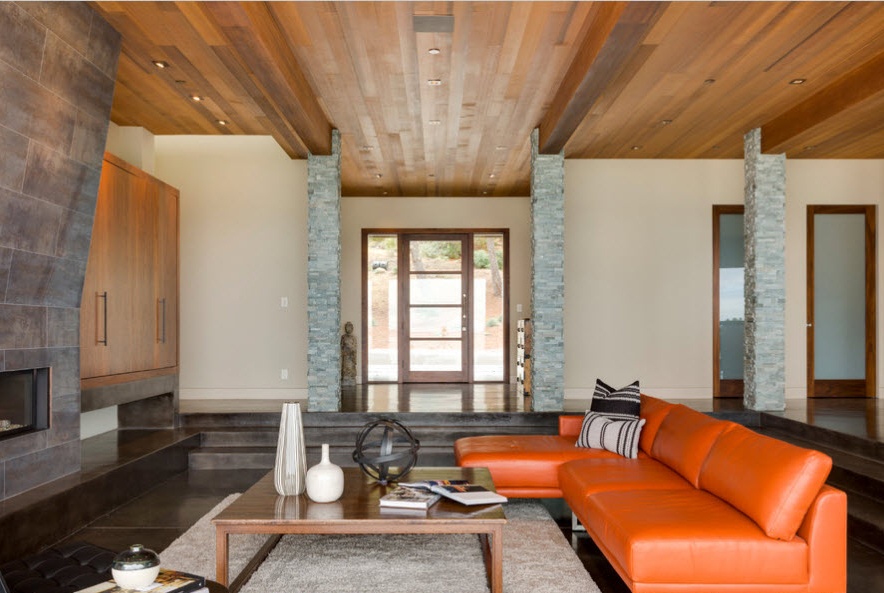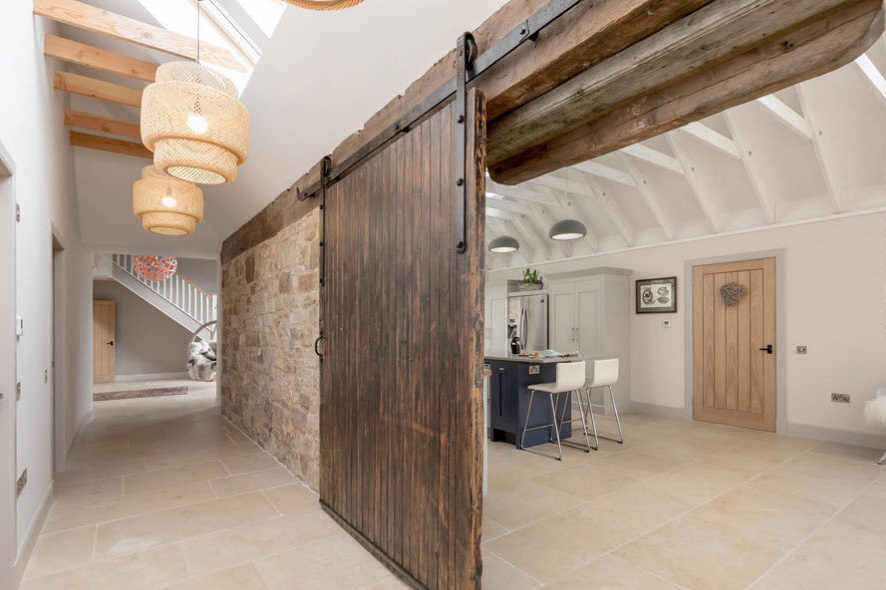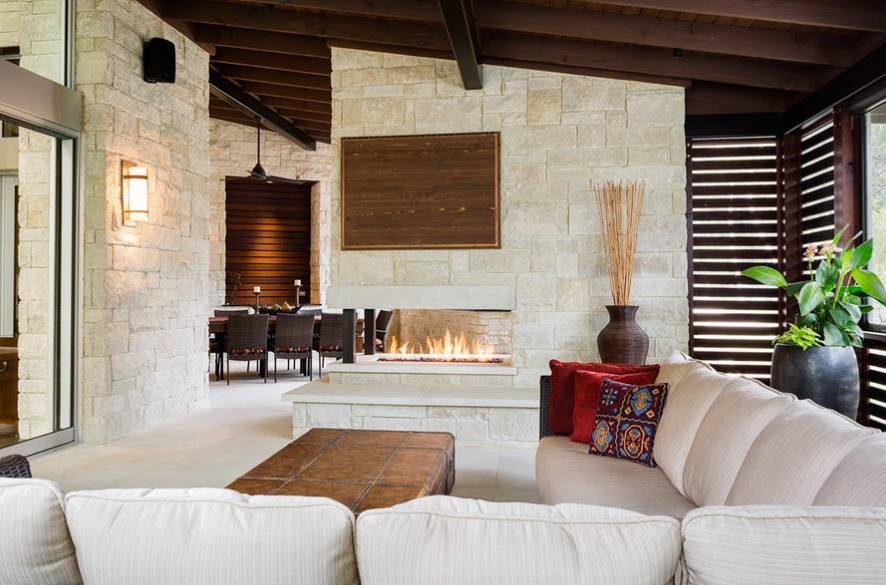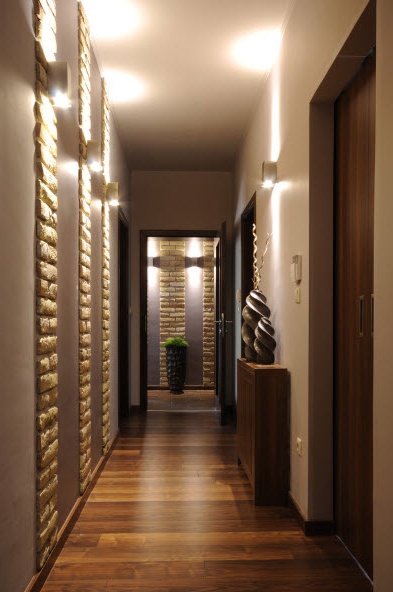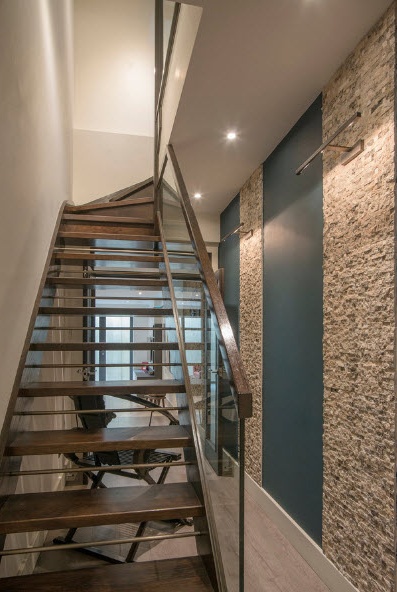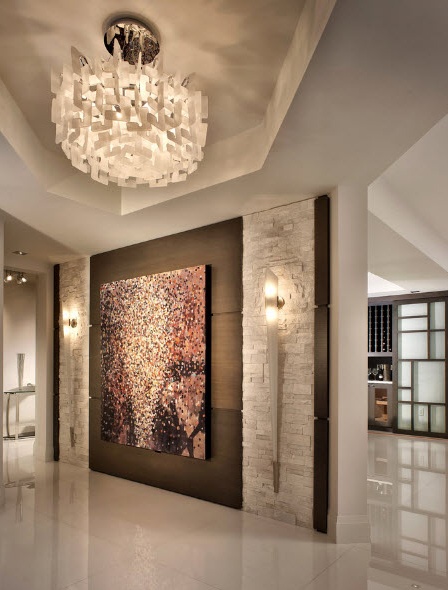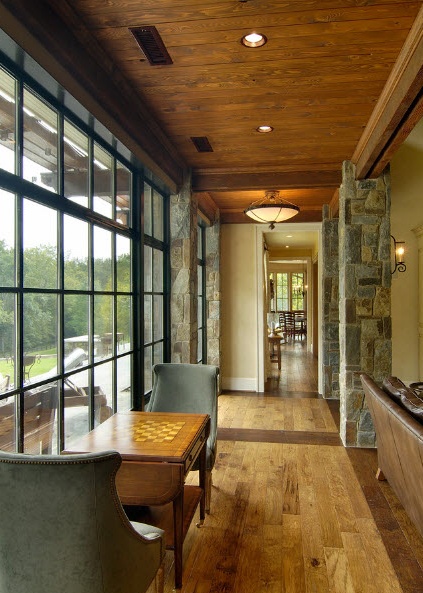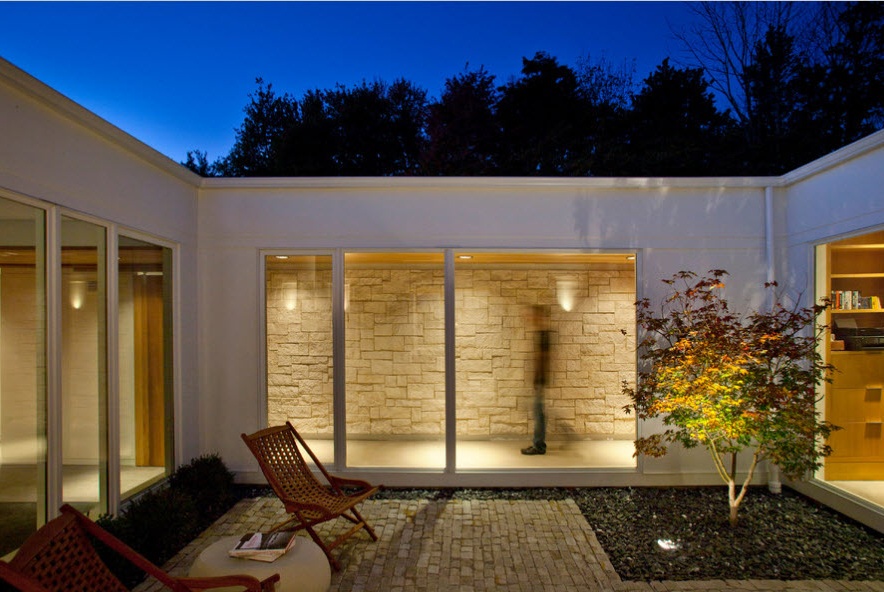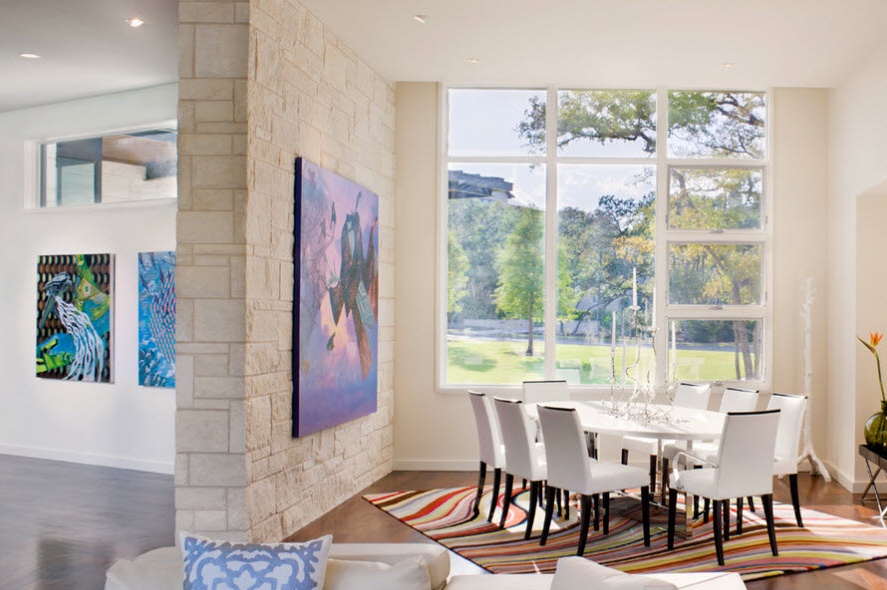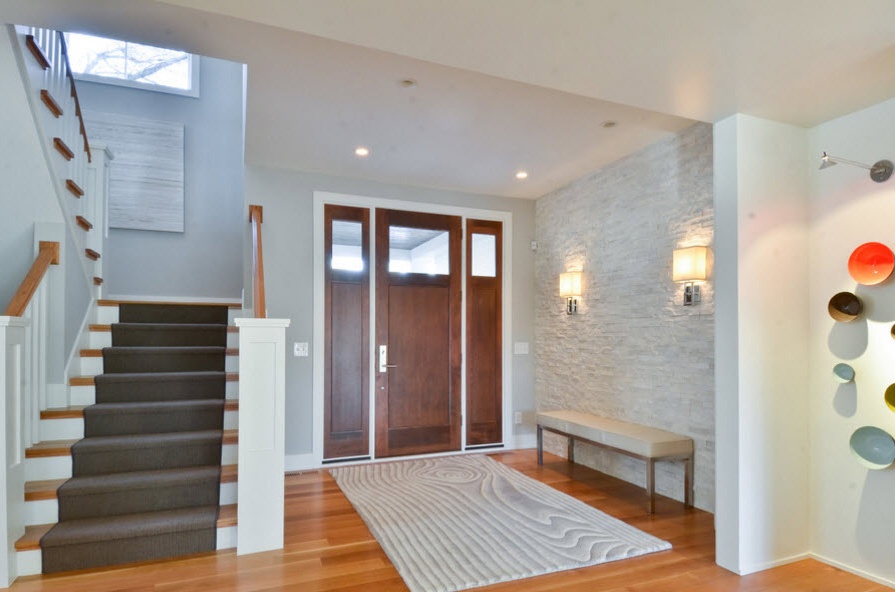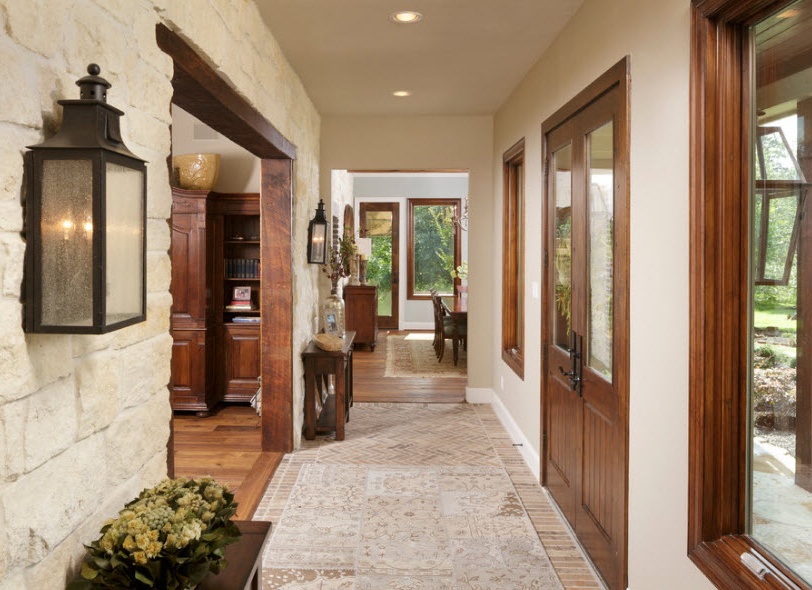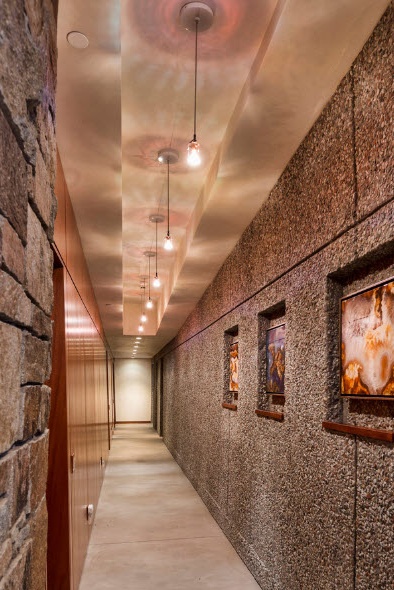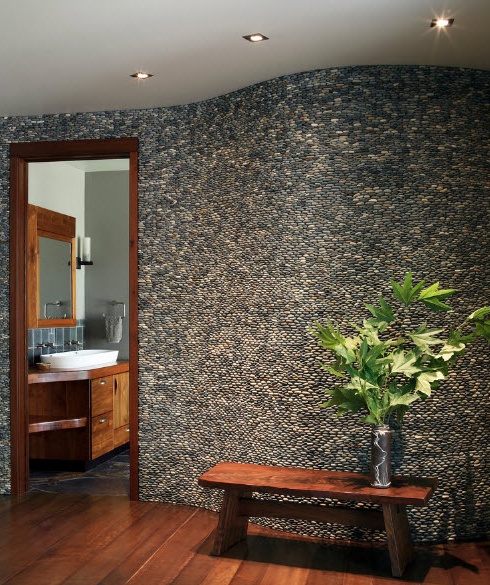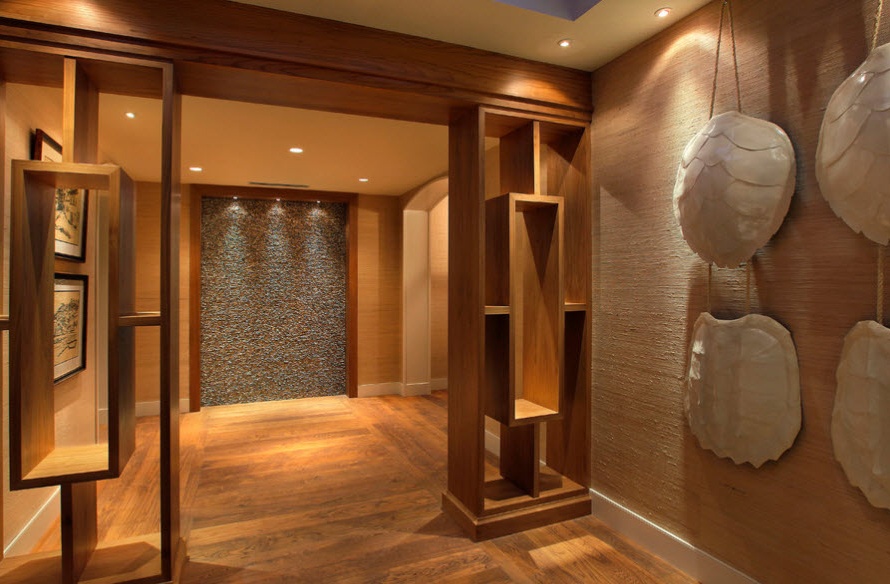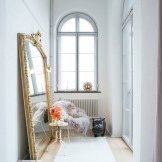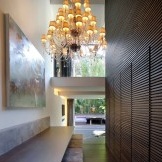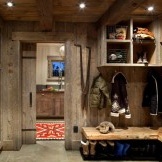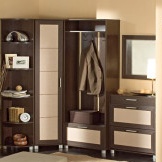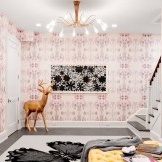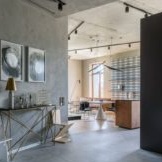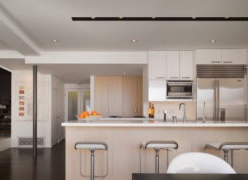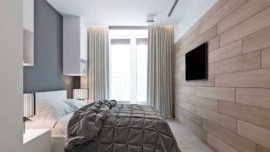Decorative stone for decorating the hallway
The use of decorative stone to decorate various rooms of a modern home has become incredibly popular. Finishing with the help of decorative stone in the hallways was more widespread. Natural material or its spectacular imitation in the surface finish of the auxiliary room, allows you to create original images that harmoniously fit into the different styles of design of modern homes - apartments or private houses. The variety of variations in the execution of artificial stone allows you to find the finishing option for any financial budget to repair the hallway. A wide range of colors and textures can satisfy the most demanding buyers. This publication is intended to help those who are considering the choice of finishing materials made of natural stone or its artificial analogue as an example of a large-scale selection of design projects with hundreds of spectacular photos.
Types of decorative stone, its properties, advantages and disadvantages
Spectacular decoration of the hallway can be done both with the help of natural stone, and with the use of its artificial counterpart - it all depends on your financial capabilities and the characteristics of the premises. Each finishing option has a set of advantages and disadvantages. One thing is obvious - a wide range of finishing materials is able to satisfy the needs of customers with different wallet sizes and product selection criteria.
Natural stone for decorating the hallway
It just so happened that the use of natural stone in the decoration of a room always indicates a high prosperity of the owners, respectability of the home. And this is not surprising, because stone trim can literally be left a legacy to the younger generation. But in addition to durability, cladding with natural stone has other advantages:
- high strength and wear resistance;
- lack of response to exposure to sunlight or moisture;
- unrivaled appearance;
- a wide range of colors and textures created by nature itself;
- high environmental friendliness and safety, both for humans and the environment;
- excellent soundproof qualities.
But, like most finishing materials, natural stone has its drawbacks:
- the high cost of the raw materials and services for their installation (complexity of processing the material);
- high weight of products, which imposes restrictions on use on certain surfaces;
- heterogeneity of the material, the complexity of the selection of products of the same size or absolutely identical color and texture.
Artificial stone for surface cladding
An artificial analogue of stone is most widely used as a decoration material for living spaces. He owes his popularity to the following qualities:
- ease of products and ease of installation, the ability to clad any surfaces (it is much easier to deliver and glue artificial stone than natural);
- a high level of imitation of natural material, often not inferior in aesthetic properties (the widest range of color and texture solutions);
- affordable, in comparison with natural raw materials, the cost of products and services for surface lining;
- the created coating can be restored, replace the damaged product;
- the coating has excellent hydrophobic qualities - it is simple and easy to care for.
The disadvantages of decorative stone created in artificial conditions are few.In addition to the lack of natural origin, we can only name the susceptibility to mechanical stress in some types of products (it all depends on the material of execution), and the high cost of the raw materials themselves and the installation of some modifications of artificial stone.
Artificial stone for finishing hallway surfaces
Artificial stone in the decoration of the premises, of course, looks spectacular. But it is important not to cross the line beyond which the spectacular design becomes overloaded. In particular, this moment applies to products with a pronounced textured and unusual coloring. So, the design of the entrance hall using decorative stone will depend on the following factors:
- the size of the room (including the height of the ceilings);
- the presence of a source of natural light (in apartments is extremely rare, and in private houses, the entrance hall can be equipped with more than one window opening);
- selected style of space design;
- the prevailing color palette of the interior.
Artificial stone can be used both for lining whole surfaces, and their elements, parts. Very often, decorative stone is used to protect the most vulnerable places from mechanical damage: corners, door and arched openings. In some cases, the creation of so-called panels is justified - an artificial stone is glued in the zone of increased risk of contamination (the lower part of the walls, approximately to the middle of the surface). The use of modern technology allows you to create an imitation of stone in products that are incredibly convenient for facing various surfaces. Even radial planes can be finished with artificial stone, not to mention simple niches and openings.
The modern market of finishing materials is saturated with goods that effectively imitate natural stone. Obviously, various raw materials are used for their production, which have a certain set of technological and aesthetic qualities. Let us consider in more detail the most popular options for creating an alternative to stone finish with a Russian buyer.
Gypsum artificial stone
One of the most popular ways to create a spectacular and at the same time flexible from the point of view of installation, imitation of stone is the use of gypsum. The low cost and excellent technological qualities push most Russians to choose gypsum products for finishing the inner surfaces of their homes. In addition to excellent aesthetic qualities and affordable prices, gypsum decorative stone has another important advantage - low weight. As a result, even a large amount of facing material is easy to transport and assemble.
Externally, the gypsum analogue of the stone is very similar to sandstone (available in various colors, close to the natural palette). At the same time, it is easy to mount it on glue (anyone can cope with the lining). Plaster artificial stone is easy to combine with other types of finishes - painting, wallpapering, processing with decorative plaster.
Gypsum material has a porous structure. The advantage of this structure is the ability to create a finish "breathe", partially let air through. But there is a drawback to such a structure - gypsum stone perfectly passes moisture. To protect the surface from water, it must be covered with special varnishes and impregnations to prevent the destruction and spread of the fungus.
Concrete lining “under a stone”
In this case, products imitating natural stone consist of sand, hardening components, plasticizers and color pigments. To give a surface of artificial “stone” tiles, the following components can be added:
- pumice;
- fine ceramic particles;
- expanded clay granules (help not only to change the structure of products, but also give certain technological properties).
The advantage of a decorative stone made on a concrete basis in its versatility.With the help of special glue, “concrete stone” cladding can be made on any surface.
Porcelain tile for hallway
Porcelain tile is a ceramic tile, the composition of which has added special elements that increase the properties of strength, wear resistance, durability and resistance to mechanical stress. To withstand large loads of porcelain stoneware allows the following composition:
- several grades of clay;
- mineral fillers;
- feldspar;
- pigments of various colors.
Porcelain tile owes its enhanced strength properties to pressing and subsequent firing at high temperatures. Products from porcelain stoneware very often have a glossy surface, the use of abrasive cleaning products for coatings from this type of finishing material is undesirable. Porcelain tile can be used both for wall decoration and for creating flooring. Floor tiles have a rough surface to prevent slipping.
Ceramic tile
Ceramic tiles are used infrequently to clad hallway walls. Basically, as a material for creating panels in the lower part of the walls, as the most risky from the point of view of pollution of the utilitarian space. Ceramic tile is strong, durable, not exposed to moisture and sunlight, is not subject to fading and has high resistance to mechanical stress. Ceramic tiles are often used to imitate such a natural stone as marble. Natural material is expensive and heavy, besides it requires special care conditions (periodic grinding and polishing), with ceramic tiles everything is many times simpler - ordinary cleaning with the possibility of using liquid cleaners.
Agglomerate as an analogue of stone finish
The agglomerates contain marble and granite chips. These inclusions allow the material to have high strength characteristics. The structure of the agglomerates also includes limestones, quartz sand and color pigments. Like most finishing materials imitating natural stone, agglomerates are mounted with glue on a previously prepared surface.
Acrylic stone finish
The use of acrylic material for decorating the walls of the hallway has several advantages:
- sufficiently high resistance to mechanical stress;
- moisture resistance;
- the surface does not attract dirt and dust (which is an important aspect for placing a hallway prone to pollution);
- ease of installation and subsequent maintenance;
- low weight of products.
Quartzite for surface cladding
Quartz stone is often used as a material for the manufacture of countertops and window sills. High strength, ease of care, excellent resistance to moisture and aesthetic properties, allow this material to be used for surface finishing, including halls. The material is able to create a durable finish that does not lose its original appearance, despite the impact of various factors.
Flexible decorative stone for the entrance hall
Words like “flexible” and “stone” are difficult to use in one sentence. But the fact is that the modern production of finishing materials has reached such a level that the expression “flexible decorative stone” does not seem strange. Flexible stone is produced directly at the place of sandstone mining - natural material is cut with a thin layer in such a way as to preserve its beautiful natural pattern and texture. Further, this thin section is subjected to grinding to obtain a smooth surface. Cut material is glued onto a layer of durable textile with an acrylic plasticizer applied to its surface.
Over time, the textile will be removed, and the mineral itself with a layer of acrylic plasticizer will be dried in the open air, under the sun.Due to the high ductility and flexibility of the resulting product, a flexible stone can be glued to any surface, even radial. You can revet arched openings or process corners, smoothing their sharpness. This modern and versatile material has a fairly high cost, but it is due to its excellent technological qualities and unlimited possibilities from the point of view of installation.
Hallway design using decorative stone
The most widespread was the fragmented use of decorative stone in the design of the hallway. The fact is that in most Russian apartments the entrance hall is a small room without a source of natural light (often the room also has an irregular shape). And in small spaces, an abundance of stone finishes can serve poor service - visually reduce the volume of the room and create an oppressive atmosphere. If you place stone trim in the form of narrow vertical stripes, you can not only diversify the design of the hallway walls and add a twist to the design of the room, but also visually increase the ceiling height of a small room.
If the decorative stone is planned to be used to create the finish of the entire wall, then most often light colors for products are chosen. As a result, you can get a light image of a utilitarian space, but with a non-trivial design. Such a light finish can also be used as a material to create an accent surface, but not color, but textured.
The original design technique for decorating utilitarian premises is the use of pebbles or river stones. In this case, a stone with a daw surface can be used both as a decorative element (small inserts in wall decoration or flooring), and as a main finishing material (option for spacious rooms with good lighting).



